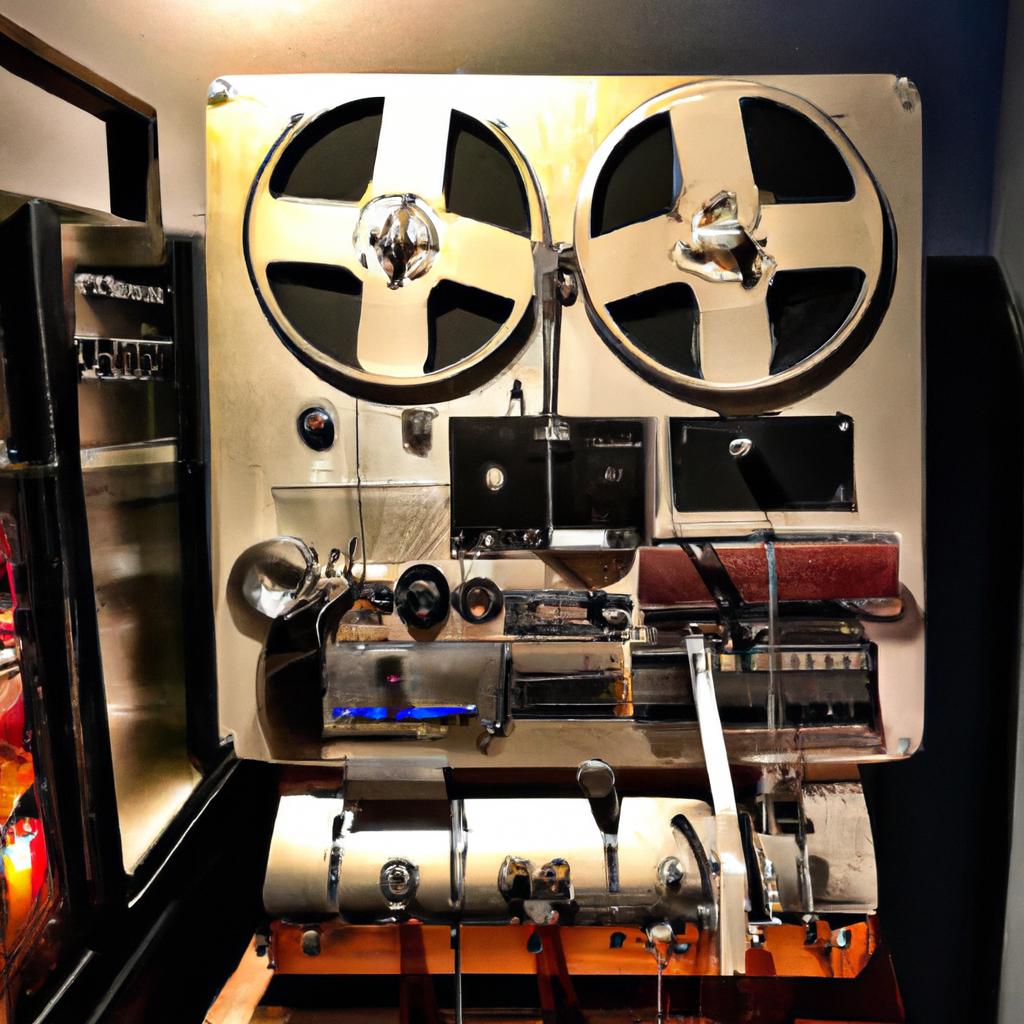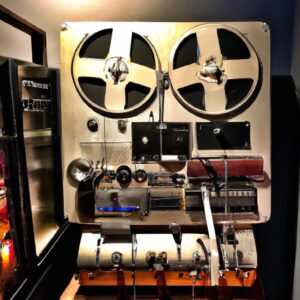Introduction to Music Production
Music production is the process of creating a track or an album, from its initial conception and writing, to the production and recording, mixing and mastering. It’s the creative process of turning ideas into a complete song or album.
Mastering the recording, mixing, and mastering techniques is essential for successful music production. These skills help create good sounding records and are use to tie together all elements of the musical project – from the recording of the tracks to the mixdown and finally the mastering.
Experts in music production will have a thorough understanding of all aspects of the production process, including workflow, effective mixing and mastering techniques, and most importantly the ability to bring life to the music.
Basic Equipment and Software Needed
Music production requires the right equipment and software to create professional sounds. While there are many tools available to producers and musicians, the basics for creating a quality recording include:
- Computer/Laptop
- Audio Interface
- Microphones
- Studio Monitors
- Headphones
- MIDI Keyboards or Controllers
- Drum Machines
- Guitar Pedals, Synthesizers and Other Musical Instruments
- Recording/Editing/Mixing Software
- Mastering Software
Having the right equipment is essential for producing quality music. Depending on the type of music you are looking to make, your equipment needs may vary. A home recording studio setup will typically include a computer, audio interface, microphones, monitors, headphones, MIDI keyboards or controllers, and a selection of musical instruments.
Choosing the right recording software and mixing/mastering software is also essential for producing professional sounding music. Some common recording/editing/mixing software used by professionals include Pro Tools, Cubase, Logic Pro X, Reaper, and Audacity. Popular mastering software includes Waves, iZotope Ozone, and Sonnox.
It is important to take the time to research and choose the right equipment and software for your needs to ensure that you have the best possible setup for recording, mixing, and mastering. Having the right tools will help you get the most out of your music productions.
Setting Up a Recording Studio
Having the right equipment and setup for creating music is essential for any music producer. In this section, we will go through the basics of setting up a recording studio so that you can start producing top-notch music.
The first step in creating the perfect recording environment is to choose the right room. Ideally, the room should be quiet and free of any outside noise interference. You should also ensure that the room has adequate soundproofing to reduce any reverberations and echoes. This could include hanging curtains, adding acoustic panels on walls, and installing carpeting on the floor.
Once you have your dream recording space, it’s time to start collecting the necessary gear. This includes microphones, audio mixers, monitors, and speakers. Microphones are the main instruments used for capturing sound. Different types of microphones are designed to capture different sounds. Audio mixers allow you to adjust the levels of each instrument and sound source. Monitors and speakers are important for accurate reference playback. They should be of good quality to ensure you’re getting the most out of your recordings.
Next, you will need to get the necessary cables and connectors. This includes XLR cables for connecting microphones and other equipment to the mixer, as well as ¼-inch cables to connect speakers and monitors. A digital audio workstation (DAW) is a must-have too. This is where you’ll record your tracks and mix them together. Popular DAWs include Pro Tools, Logic Pro, and Ableton.
Finally, when everything is connected and set up, it’s time to test it out. Play some music and listen carefully. Make sure that there’s no feedback or distortions coming from the speakers. Adjust the levels on the mixer to ensure proper balance. Once you’ve done all these steps, you’ll have your recording studio ready!
Tips for Tracking and Recording Instruments
Music production involves recording, mixing, and mastering music. Recording instruments is an integral part of this process. It is essential to learn the best practices when tracking and recording instruments in order to create high-quality audio recordings.
When recording instruments, it is important to keep your recording environment clean and quiet. To get the cleanest signal possible, you should make sure that there are no other sounds in the room that could interfere with your recording. This includes shutting off other electrical devices, keeping pets out of the room, and avoiding having too many people in the room.
You should also make sure that you have the right equipment for your recording session. This includes a microphone, preamp, and digital audio workstation (DAW) software. You should also invest in good quality cables and an audio interface to ensure that your recordings come out with the best sound quality possible.
When recording instruments, it is important to pay attention to the levels and EQ settings. You want to make sure that the signals are not too hot or too low. This will help you avoid clipping, distortion, or any other kind of audio artifacts. Additionally, you should adjust the EQ settings to suit the instrument being recorded. This will help you capture the sound of the instrument accurately.
Finally, it’s important to practice your recording techniques. The more familiar you become with the recording process, the better the results will be. If you can train yourself to recognize and correct mistakes quickly, you can save time and energy while producing higher quality audio recordings.
Mixing and Balancing Recordings
Mixing is the process of combining multiple tracks into one stereo track. It involves adjusting the levels, equalization, panning, and other aspects for each track. Balancing is the combining of both the mixing and mastering processes, which can make a track sound fuller and more cohesive.
When mixing a track, it’s important to start with the louder tracks that will be the focus of the song. After recording the main instruments, like guitar, bass, and drums, add in other elements like vocal tracks and synths. Use panning to spread out the audio across the stereo field. Panning can be used to create a sense of width and place instruments in the mix.
On any track, you’ll usually want to apply EQ and adjust the levels. EQ is a type of frequency filter and can be used to cut or boost certain frequencies to achieve the desired sound. Adjust the levels to bring the different tracks into balance and make sure none of them sound too loud or quiet. Reverb can also be used to create space for different tracks so that they don’t all sound too close together.
Once the balance and levels are correct, it’s time to start mastering the track. Mastering can help give the track a polished sound, as well as increase the loudness of the track without sacrificing quality. Compression is often used to reduce dynamic range and balance out the highs and lows, while EQ can be used to further shape the sound. Other effects like limiting and saturation can be used to polish the final product.
Overview of Mastering Techniques and How They Improve Sound
Mastering is an essential step in the music production process. It is the last stage in the recording process before a track is ready to be released. Mastering is the process of taking all the audio recordings and combining them into one balanced, polished track. Mastering involves adding effects, adjusting the volume level, and making sure the overall sound is consistent between different sections or verses. Mastering can also involve fixing timing issues, noise reduction, and more.
When done correctly, mastering can make a huge difference in the overall sound of a track – improving clarity, depth, and volume. It can also create consistency between tracks, so that they sound more coherent when played together. In short, mastering helps a track sound professional and ready for release.
When mastering a track, it is important to pay attention to the small details while maintaining a cohesive sound. This includes adjusting the stereo width, panning, EQ, and compression, as well as working with other specialized tools such as limiting, de-essing, and expansion.
It’s important to remember that mastering is never a substitute for the recording and mixing process. It is critical to have good quality recordings and mix to begin with, as they will provide the foundation upon which mastering is built.
When done correctly, mastering can take your tracks to the next level and make them stand out from the competition. It’s a crucial step in the music production process and can make the difference between a great sounding track or a mediocre one.
Best Practices for Mastering Tracks
When it comes to mastering a track, there are some important best practices to follow. First, it’s essential to make sure that your mix is as well-balanced and free from any major technical issues as possible. This means ensuring that your levels are balanced and that the mix sounds natural when played at different volumes and levels. The mastering process can only amplify existing issues in your mix, so take extra care when mixing first!
Once you’ve mixed the track, it’s time to move onto mastering. Here are some tips to ensure the best results:
- Start by removing any unwanted high-end frequencies (around 8-12 kHz) and low-end frequencies (below 50 Hz). This can be done with a low-cut and high-cut filter.
- Apply equalization to add punch and clarity to the overall mix. Make sure to use subtle adjustments and use the ‘listen’ function to check your work.
- Add compression to make sure that your levels remain stable throughout the track. This will also help glue the mix together.
- Use saturation to give your mix warmth and character.
- Add reverb if needed, being careful not to overuse it.
- Apply limiting to the final mix to increase the overall loudness of the track. Be sure to adjust to taste, as too much limiting can lead to an unnatural sound.
- Test the mix in different listening environments. This will help you spot any weaknesses in the mix that you may have missed.
- Take regular breaks to allow your ears to rest. Regular breaks throughout the mastering process can help ensure that you maintain a fresh perspective.
By following the best practices outlined above, you should be able to create a well-polished master that perfectly reflects the emotion of your track. Remember to be patient and take your time – quality results take time!
Conclusion
Producing music can be a daunting task but by following the steps outlined in this guide, you are now equipped with the knowledge and understanding of how to successfully record, mix, and master music. By taking the time to learn the fundamentals of music production, you can ensure that every track you complete is of the highest quality.
The key takeaway lessons from this guide include: choosing the right equipment and software for your studio setup, understanding the fundamentals of tracking and recording instruments, mastering the mixing and balancing process, and finally learning the techniques and best practices used to master a track.
By mastering these topics, you are one step closer to producing professional-level music that is ready for the world to hear.
comments: 0

